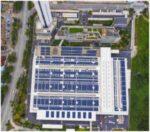ITOCHU Corporation, Nippon Steel Corporation, Taiheiyo Cement Corporation, Mitsubishi Heavy Industries, Ltd., INPEX CORPORATION, Taisei Corporation, and ITOCHU Oil Exploration Co., Ltd. have been selected by the Japan Organization for Metals and Energy Security (hereinafter “JOGMEC”) to conduct “Engineering Design Work for Japanese Advanced CCS Projects” (hereinafter “Work”), a public offered project.(1) CCS is positioned as a means for decarbonisation that should be fully harnessed, particularly in hard-to-abate industries(Note2), to achieve two targets set by the Japanese government: carbon neutrality in 2050 and a 46% reduction in greenhouse gas emissions (from FY2013 level) in FY2030. To expedite social implementation of CCS, JOGMEC issued a public call for advanced CCS projects in 2023 with the goal of achieving the successful underground storage of domestically-emitted carbon dioxide (CO2) by FY2030. And the Initiative was selected as one of the first advanced CCS projects in Japan to be eligible for governmental support. The Initiative involves the concept of using ships to transport CO2 separated and captured at the Nippon Steel’s Kyushu Works Oita Area and the Kawasaki Plant of DC CO., Ltd., a Taiheiyo Cement Group company, to candidate storage sites. In FY2023, a feasibility study was conducted relating to the CO2 separation, capture, transportation and storage, which included identifying technical issues in the overall project as well as studies on economic viability and public acceptance.(3) The Work selected this time includes Front End Engineering Design (FEED) work relating to the separation, capture, ship transportation and storage of CO2 and appraisal drilling, as the next phase of the project.(4) Based on the results of the feasibility study mentioned above, basic engineering design work will be carried out from the perspectives of both technical and economic viability for each element of the value chain with the goal of starting operations by FY2030. The seven […]









